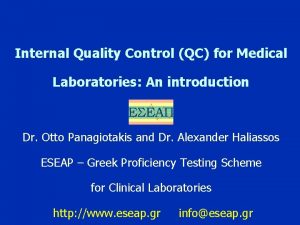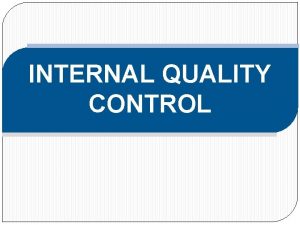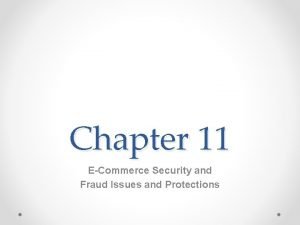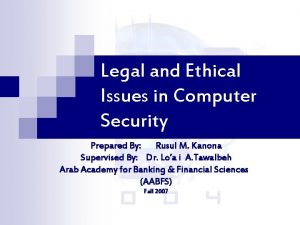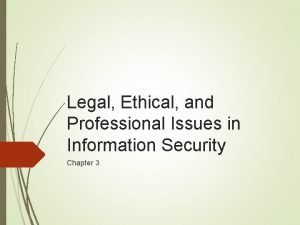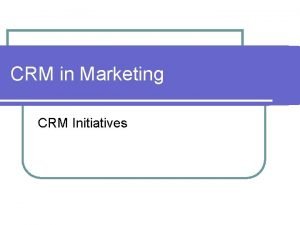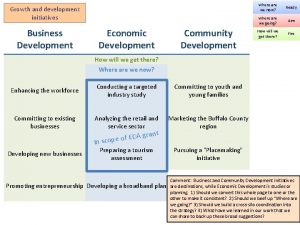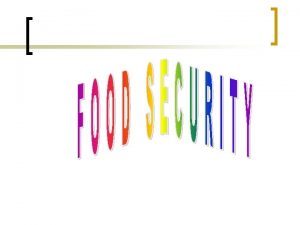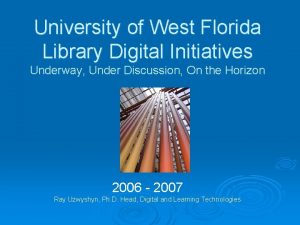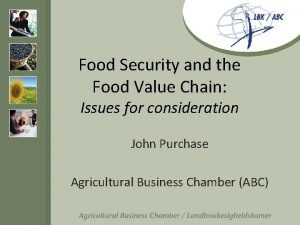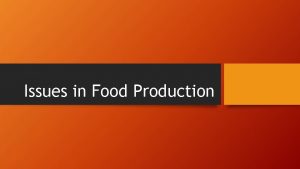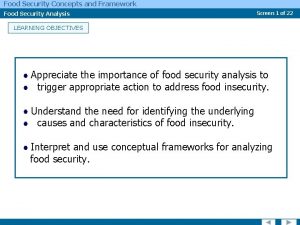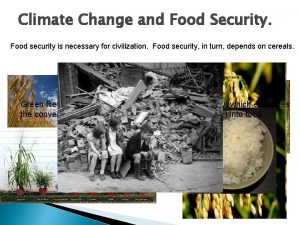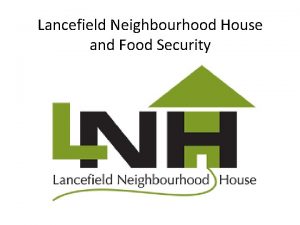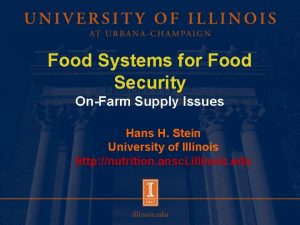Food Security Key issues and initiatives underway Julie
















- Slides: 16

Food Security – Key issues and initiatives underway Julie Brimblecombe & Megan Ferguson Regional CDEP Best Practice workshop Darwin, 12 November 2010

Food Security: A Human Right “Everyone has the right to a standard of living adequate for the health and wellbeing of himself and of his family, including food” (Universal declaration of human rights, 1948) “Paradox of hunger in the midst of plenty” – (Great Depression) Food security: “The availability of and assured access to sufficient food that is nutritionally adequate, culturally acceptable, safe, and which is obtained in socially acceptable ways”

A STRONG FOOD SYSTEM A strong food system defined by the community. A future without food worries, without hunger, with enough of the right food. “The land the sea is our food security”. Food security for us is when the food of our ancestors is protected and always there for us and our children. It is also when we can easily access and afford the right nontraditional foods for a collective healthy and active life. When we are food secure we can provide, share and fulfil our responsibilities, we can choose good food knowing how to make choices and how to prepare and use it. (“Good food systems: Good for all” project face to face, February 2010)

Food security: Australia & overseas US – 14. 6% NZ – 14% general population § 50% Pacific Island people § 33% Maori AUSTRALIA (NNS 1995) In the last 12 months were there any time that you ran out of food and couldn’t afford to buy more? 5% general Australians; highest in those categories of greatest disadvantage; 16% paying rate or board gave a positive response § § INDIGENOUS AUSTRALIA (NATSIHS 1994) 24% Indigenous Australians NT 45% vs 18 -29% other states and ACT Remote (36%) vs non-remote areas (20%) § § §

Food security and diet Food insecurity - Nutrient poor - Diet less varied - Lower fruit and veg intake - Diet nutritionally inadequate Micronutrient deficiency - Meat and fruit Energy not different Iron, vit C and folate

Nutrition and Health Risk factors contributing to the Indigenous health gap, 2003 Source: Burden of Disease & Injury in Aboriginal and Torres Strait Islander People – Policy Brief 2003

Four dimensions of food security Food Availability Food Security Food Use Food Access

Livelihoods framework Ongoing Intermediate Indicators • Turnover of fruit & veg; sugar; sweet drinks • Household kitchen infrastructure • Cost of food relative to income [FAO Committee on World Food Security 2000]

Key issues in food security: high income countries wealth Cost of living employment housing Economic Cooking skills Nutrition knowledge Govt. policy Food bank usage Financial skills Political Socio-cultural Cultural obligations Welfare system Food availability Gorton D, Bullen C, Ni Mhurchu C. Environmental influences on food security in high-income countries. Nutrition Reviews 68 (1): 1 -29 health Social Education networks Household level composition Physical Food pricing Lack of Location transport

Key initiatives o Income growth (livelihood strategies) supported by… o Direct nutrition interventions (food development to support food availability and access); & o Investment in health, housing, water and education (health-related activities)

Addressing household food insecurity Aim: • Validation of a tool to measure food insecurity at the household level for urban Indigenous populations Process: • National surveys use two questions to determine food insecurity • Validation of an internationally accepted tool which has 18 questions in an urban Indigenous population • Exploring factors influencing food security/ insecurity Outcome: • A tool that will measure food insecurity in urban Indigenous populations • An understanding of the association between food insecurity and diet and child health outcomes (body size, haemoglobin)

Addressing community food insecurity Remote community food stores Priorities: • Policy which support the sale and promotion of healthy foods and drinks • Increasing the sales of healthy products, especially fresh fruit and vegetables • Decreasing the sales of unhealthy products, especially sugared drinks and tobacco

Addressing community food insecurity Remote community food stores Strategies: • Product, Price, Placement, Promotion • Training and resource support for staff • Measuring and reporting on sales

Addressing community food insecurity Research in remote communities • Good Food Systems - uses a capacity development and continuous quality improvement approach to address community level food security - Supports food governance groups in communities to plan, do, study and act for nutrition improvement • Evaluation of the impact of price on purchasing patterns - with a focus on fresh fruit and vegetables, sugared drinks and tobacco • Keeping Track of Healthy Foods - a tool which provides the capacity to measure and report on the volume of foods/drinks sold through the store and those provided through community programs - the tool also provides the capacity to analyse the nutrients coming from the foods/drinks sold and provided

Addressing community food insecurity Plans for research in the remote community context • Point of sales data as a food and nutrition monitoring tool - validating the use of store sales data as an tool to monitor community level dietary and nutrient intake • Economics of dietary improvement - using the store as the setting for dietary improvement, to determine the cost to improve the nutritional quality of foods to the level such that the population is consuming a diet inline with recommendations for good health • Intervention - to propose an intervention which would address community food security, potentially through two key influences on food security one at the policy and one at the consumer level

For more information contact: Julie Brimblecombe Ph: 8922 8577 Julie. Brimblecombe@menzies. edu. au Megan Ferguson Ph: 08 8943 5012 Megan. Ferguson@menzies. edu. au
 Internal quality control
Internal quality control 41s westgard rule
41s westgard rule Privatesecurity
Privatesecurity Ecommerce security issues
Ecommerce security issues What is food safety
What is food safety Professional issues in cyber security
Professional issues in cyber security Legal and ethical issues in computer security
Legal and ethical issues in computer security Ethical issues in computer security
Ethical issues in computer security Legal and ethical issues in information security
Legal and ethical issues in information security Unit 2 food food food
Unit 2 food food food Food chain sequence
Food chain sequence Delvic sanitation initiatives
Delvic sanitation initiatives Digital initiatives in higher education
Digital initiatives in higher education Crm initiatives
Crm initiatives Johannes volkelt empathy theory advantages
Johannes volkelt empathy theory advantages Business development initiatives
Business development initiatives People's initiatives
People's initiatives
